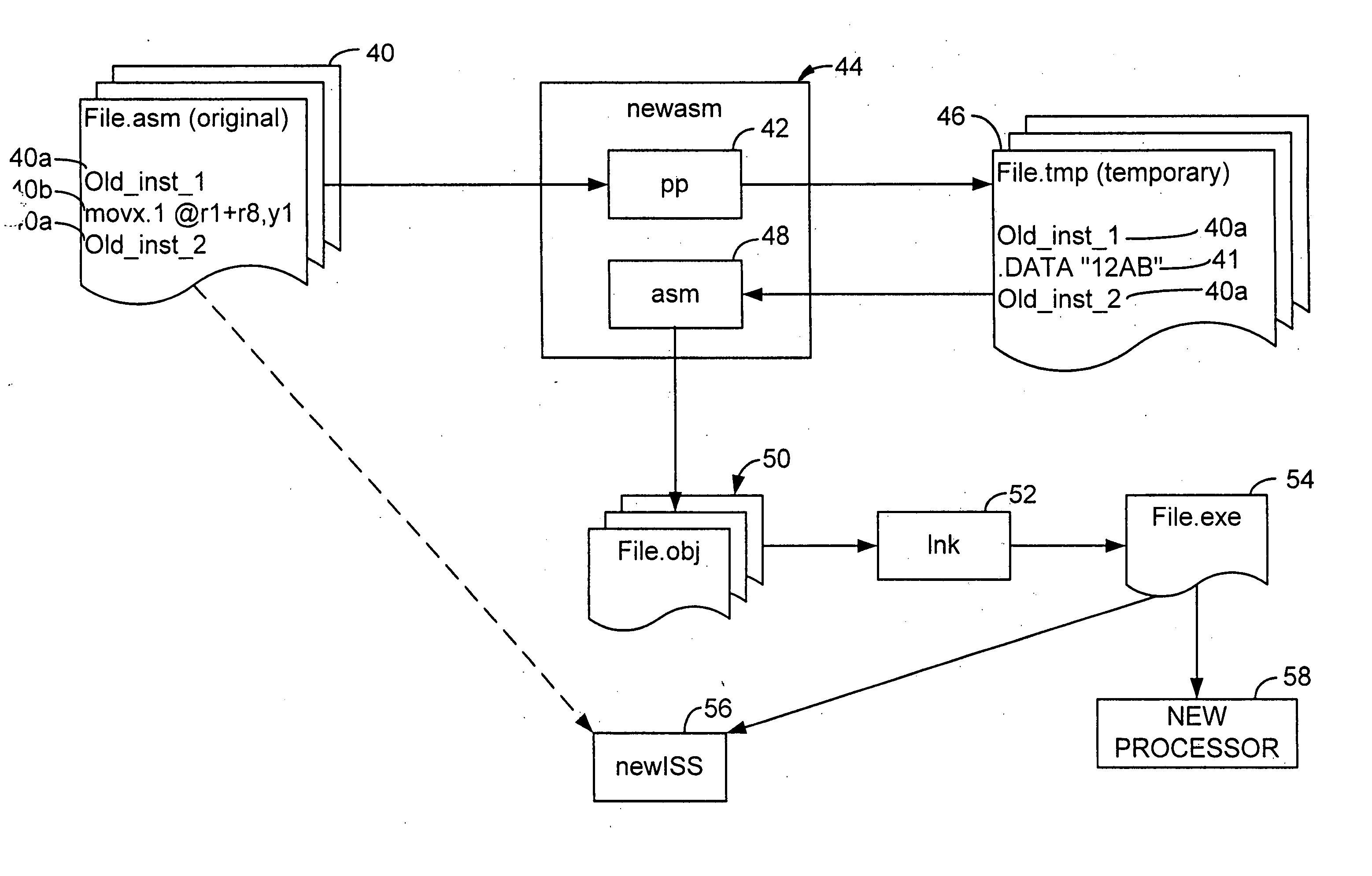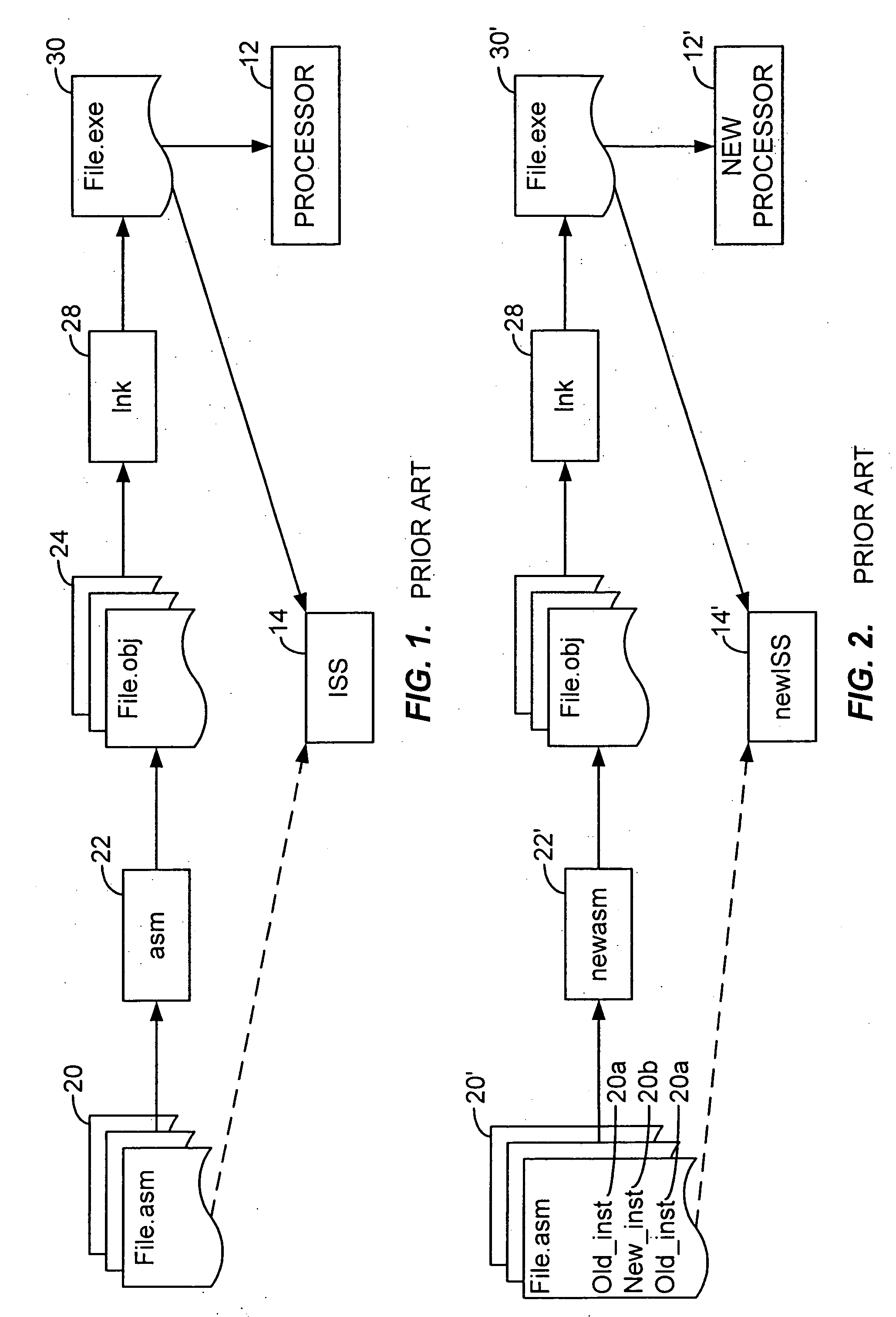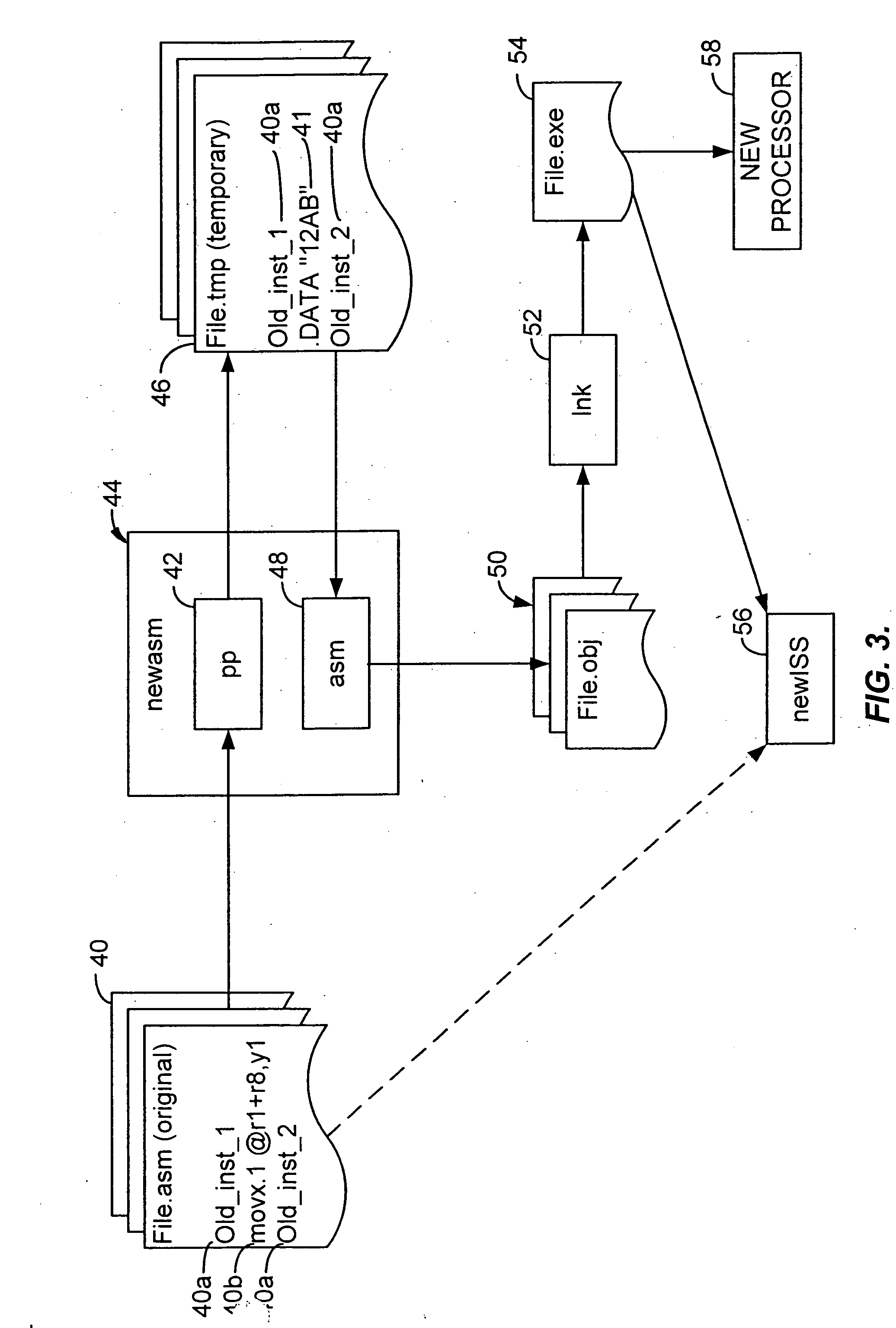Assembly language code compilation for an instruction-set architecture containing new instructions using the prior assembler
a technology of assembly language and instruction-set architecture, applied in the field of assembly language source code compilation, can solve the problems of less allow, inability to handle new instructions, added instructions, etc., and achieve the effect of simple and effectiv
- Summary
- Abstract
- Description
- Claims
- Application Information
AI Technical Summary
Benefits of technology
Problems solved by technology
Method used
Image
Examples
Embodiment Construction
[0017] The present invention, as noted above, is a technique for employing an older assembler to produce executable object code from a source code containing old assembly language instructions, compatible with the older assembler, and added, new assembly language instructions not capable of being interpreted by the older assembler. The invention uses the data directive feature usually found in presently available assembler applications. Such data directive features are capable of taking an argument, usually in hexadecimal format, and inserting that argument in the object code unchanged.
[0018] Turning now to the figures, and for the moment FIG. 3, there is illustrated a diagrammatic representation of the method of the present invention as implemented on a processing system (not shown). As FIG. 3 shows, an original source file (File.asm) 40 contains old assembly instructions 40a (Old_inst_1 and Old_instr_2) and new assembly instructions 40b (movx.1 @r1+r8, y1) that form a part of a n...
PUM
 Login to View More
Login to View More Abstract
Description
Claims
Application Information
 Login to View More
Login to View More - R&D
- Intellectual Property
- Life Sciences
- Materials
- Tech Scout
- Unparalleled Data Quality
- Higher Quality Content
- 60% Fewer Hallucinations
Browse by: Latest US Patents, China's latest patents, Technical Efficacy Thesaurus, Application Domain, Technology Topic, Popular Technical Reports.
© 2025 PatSnap. All rights reserved.Legal|Privacy policy|Modern Slavery Act Transparency Statement|Sitemap|About US| Contact US: help@patsnap.com



